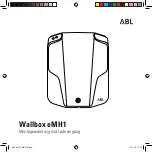
fied on the vehicle identification plate on the
B‑pillar on the driver's side.
Maximum weight of the laden vehicle: the
maximum weight is the sum of the curb weight
of the vehicle, the weight of the accessories, the
maximum load and the weight of optional equip‐
ment installed at the factory.
Kilopascal (kPa): metric unit for tire pressure.
6.9 kPa corresponds to 1 psi. Another unit for
tire pressure is bar. 100 kilopascal (kPa) equals
1 bar.
Load index: in addition to the load-bearing
index, the load index may also be imprinted on
the side wall of the tire. This specifies the load-
bearing capacity of the tire more precisely.
Curb weight: the weight of a vehicle with stand‐
ard equipment including the maximum capacity
of fuel, oil and coolant. It also includes the air
conditioning system and optional equipment if
these are installed on the vehicle, but does not
include passengers or luggage.
Maximum tire load: the maximum tire load is
the maximum permissible weight in kilograms or
lbs for which a tire is approved.
Maximum permissible tire pressure: maxi‐
mum permissible tire pressure for one tire.
Maximum load on one tire: maximum load on
one tire. This is calculated by dividing the maxi‐
mum axle load of one axle by two.
PSI (pounds per square inch): standard unit of
measurement for tire pressure.
Aspect ratio: ratio between tire height and tire
width in percent.
Tire pressure: pressure inside the tire applying
an outward force to every square inch of the tire.
The tire pressure is specified in pounds per
square inch (psi), in kilopascals (kPa) or in bar.
The tire pressure should only be corrected when
the tires are cold.
Cold tire pressure: the tires are cold when the
vehicle has been parked for at least 3 hours
without direct sunlight on the tires or the vehicle
has been driven for less than 1 mile (1.6 km).
Tire contact surface: the part of the tire that
comes into contact with the road.
Tire bead: the purpose of the tire bead is to
ensure that the tire sits securely on the wheel
rim. There are several wire cores in the tire bead
to prevent the tire from changing length on the
wheel rim.
Side wall: the part of the tire between the tread
and the tire bead.
Weight of optional equipment: the combined
weight of the optional equipment weighing more
than the replaced standard parts and more than
5 lbs (2.3 kg). This optional equipment, such as
high-performance brakes, level control system, a
roof luggage rack or high-performance batteries,
is not included in the curb weight and the weight
of the accessories.
TIN (Tire Identification Number): a unique
identification number which can be used by a
tire manufacturer to identify tires, for example,
in a product recall, and thus identify the pur‐
chasers. The TIN is made up of the manufactur‐
er's identity code, tire size, tire type code and
the manufacturing date.
Load-bearing index: the load-bearing index is a
code that contains the maximum load-bearing
capacity of a tire.
414 Wheels and tires
Содержание E-Class Wagon 2019
Страница 8: ...6 At a glance Cockpit ...
Страница 10: ...Instrument Display standard 8 At a glance Warning and indicator lamps ...
Страница 12: ...Instrument Display in the Widescreen Cockpit 10 At a glance Warning and indicator lamps ...
Страница 14: ...12 At a glance Overhead control panel ...
Страница 16: ...14 At a glance Door control panel and seat adjustment ...
Страница 18: ...16 At a glance Emergencies and breakdowns ...
Страница 244: ...Switching the Head up Display on off Press button 1 242 Instrument Display and on board computer ...
Страница 537: ......
Страница 538: ......
















































